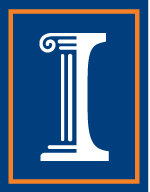Overview:
Near-field optical microscopy has
developed dramatically in recent years. The first proposal of a method
to circumvent the Rayleigh-Abbe resolution limit was put forward by
Synge in 1928. Synge proposed that a thin sample be illuminated through
a subwavelength aperture. By recording the transmitted light as a
function of aperture position, a subwavelength resolved image of the
sample may be acquired. Today this method is known as near-field
scanning optical microscopy (NSOM) or scanning near-field optical
microscopy (SNOM); it is practiced in many variations including the
reciprocal arrangement in which the sample is illuminated by a source
in the far zone of the sample and light is collected through a small
aperture. The role of the small aperture is now played by the tip of
a tapered optical fiber, a technique not known to Synge.
NSOM has attracted considerable
attention as a technique to obtain images of surfaces with subwavelength
resolution. This achievement is particularly important for imaging
structures where spectroscopic concerns or sample handling requirements
dictate the use of lower frequency fields and yet high spatial
resolution is still required. Applications range from the inspection
of organic and biological samples to semiconductors. Various
experimental modalities are in practical use. Two prominent examples
are collection mode NSOM and illumination mode NSOM. In illumination
mode NSOM, a tapered fiber probe with a sub-wavelength size aperture
serves as a source of illumination in the near-zone of the sample. The
scattered field intensity is then measured and recorded as a function
of the probe position while the probe is scanned over the sample. In
collection mode NSOM, the fiber probe serves to detect the total field
in the near-zone as the sample is illuminated by a source in the far
zone.
There are certain limitations of
NSOM as currently practiced. Despite the fact that the sample may
present a complicated three-dimensional structure, NSOM produces only a
two-dimensional image. Indeed, rather than being an imaging method, it
is more accurate to say that NSOM maps the sub-wavelength structure of
the optical near-field intensity in some plane above the sample. Under
certain simplifying assumptions, such as homogeneity of the bulk
optical properties of the sample, the images produced in these
experiments may be related to the sample structure. However, for the
more general case in which the topography of the sample and the bulk
optical properties both vary, the relationship between the near-field
intensity and the sample structure has proven ambiguous.
Essential to the near-field
modality of NSOM is the presence of inhomogeneous, or evanescent, modes
of the illumination field. Specifically, the illuminating field
consists of a superposition of plane waves including the high spatial
frequency evanescent plane waves. These waves are super-oscillatory
parallel to some reference plane and are exponentially decaying away
from the plane.
To resolve the ambiguity in
near-field images it is desirable to solve the near-field inverse
scattering problem. By solving the ISP two issues are resolved. The
ambiguity in the relationship between the sample properties and the
measured data is removed, and simultaneously three-dimensional,
tomographic images of the sample are obtained. The inverse problem is
ill-posed, in particular the reconstructed image changes dramatically
with small changes in the data. However, the inverse kernel may be
regularized and meaningful reconstructions computed as has been shown
within the framework of a scalar model for a variety of modalities.
References:
- P S Carney and J C Schotland, "Inverse scattering for
near-field microscopy," Appl. Phys. Lett. 77, 2798-2800 (2000). PDF
- P S Carney and J C Schotland, "Near-field tomography," in Inside
Out, Gunther Uhlman, ed. (Cambridge University Press, Cambridge, 2003). PDF
This project is being funded by an NSF Career Award.
See theFunding page for more details
|
